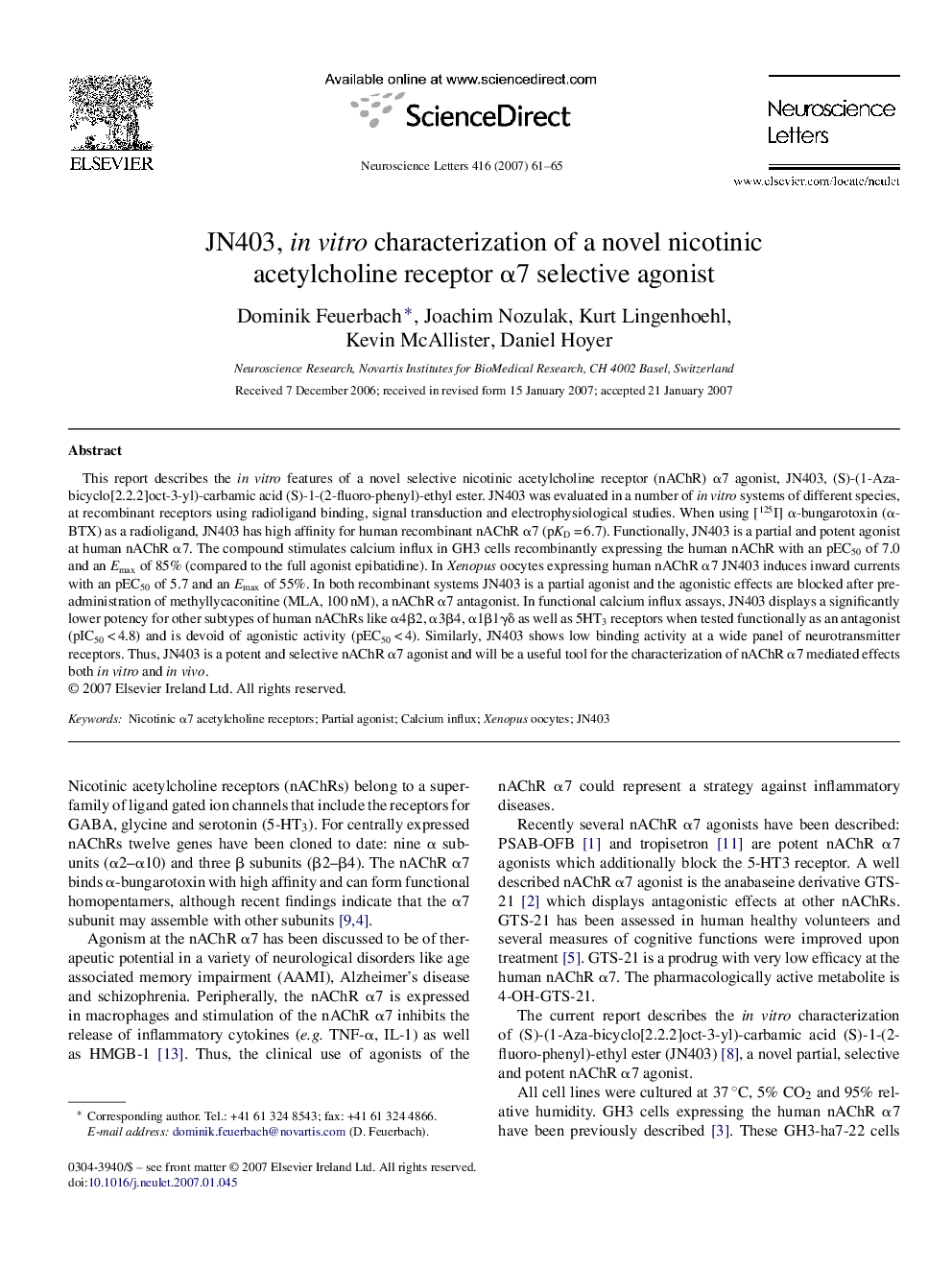| Article ID | Journal | Published Year | Pages | File Type |
|---|---|---|---|---|
| 4349729 | Neuroscience Letters | 2007 | 5 Pages |
This report describes the in vitro features of a novel selective nicotinic acetylcholine receptor (nAChR) α7 agonist, JN403, (S)-(1-Aza-bicyclo[2.2.2]oct-3-yl)-carbamic acid (S)-1-(2-fluoro-phenyl)-ethyl ester. JN403 was evaluated in a number of in vitro systems of different species, at recombinant receptors using radioligand binding, signal transduction and electrophysiological studies. When using [125I] α-bungarotoxin (α-BTX) as a radioligand, JN403 has high affinity for human recombinant nAChR α7 (pKD = 6.7). Functionally, JN403 is a partial and potent agonist at human nAChR α7. The compound stimulates calcium influx in GH3 cells recombinantly expressing the human nAChR with an pEC50 of 7.0 and an Emax of 85% (compared to the full agonist epibatidine). In Xenopus oocytes expressing human nAChR α7 JN403 induces inward currents with an pEC50 of 5.7 and an Emax of 55%. In both recombinant systems JN403 is a partial agonist and the agonistic effects are blocked after pre-administration of methyllycaconitine (MLA, 100 nM), a nAChR α7 antagonist. In functional calcium influx assays, JN403 displays a significantly lower potency for other subtypes of human nAChRs like α4β2, α3β4, α1β1γδ as well as 5HT3 receptors when tested functionally as an antagonist (pIC50 < 4.8) and is devoid of agonistic activity (pEC50 < 4). Similarly, JN403 shows low binding activity at a wide panel of neurotransmitter receptors. Thus, JN403 is a potent and selective nAChR α7 agonist and will be a useful tool for the characterization of nAChR α7 mediated effects both in vitro and in vivo.
